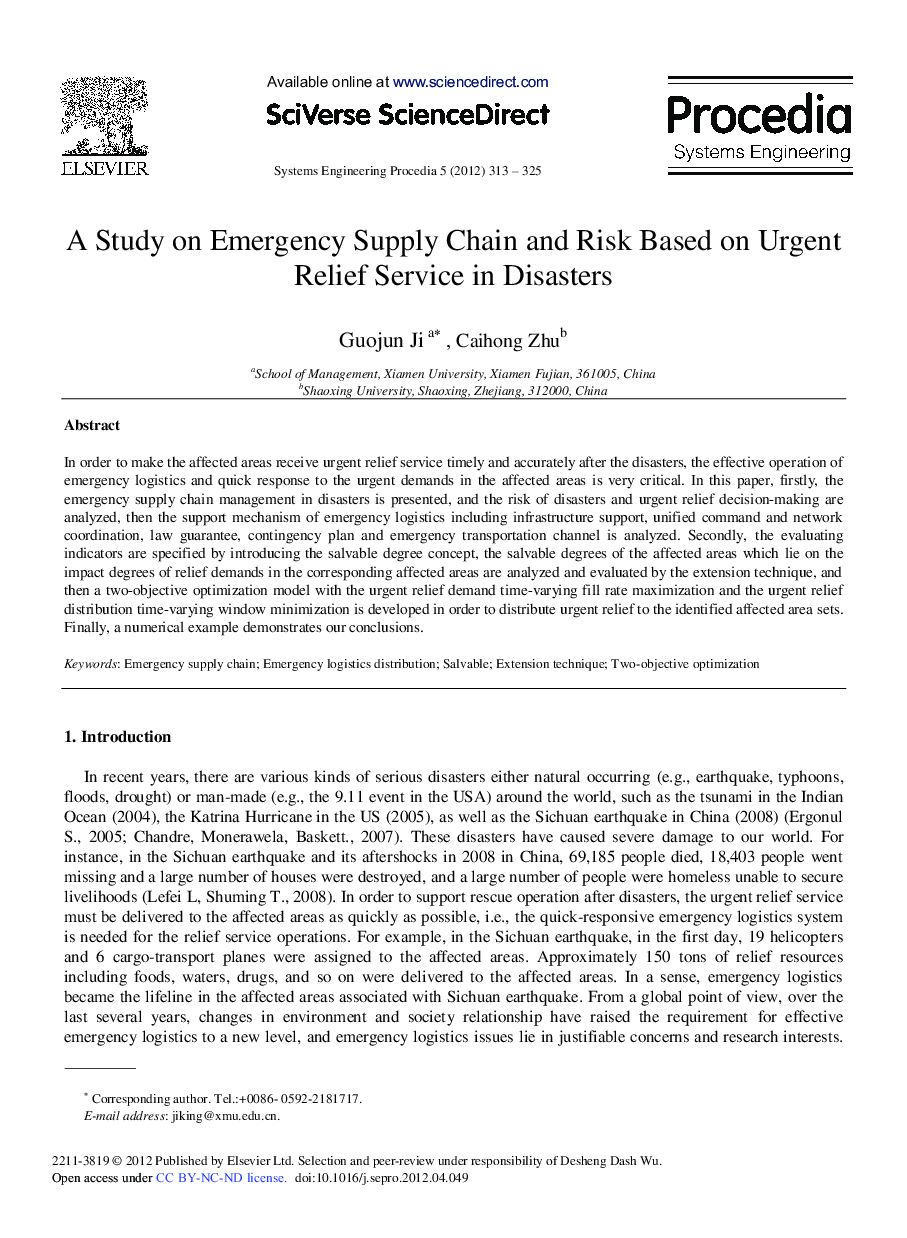| Article ID | Journal | Published Year | Pages | File Type |
|---|---|---|---|---|
| 1143911 | Systems Engineering Procedia | 2012 | 13 Pages |
In order to make the affected areas receive urgent relief service timely and accurately after the disasters, the effective operation of emergency logistics and quick response to the urgent demands in the affected areas is very critical. In this paper, firstly, the emergency supply chain management in disasters is presented, and the risk of disasters and urgent relief decision-making are analyzed, then the support mechanism of emergency logistics including infrastructure support, unified command and network coordination, law guarantee, contingency plan and emergency transportation channel is analyzed. Secondly, the evaluating indicators are specified by introducing the salvable degree concept, the salvable degrees of the affected areas which lie on the impact degrees of relief demands in the corresponding affected areas are analyzed and evaluated by the extension technique, and then a two-objective optimization model with the urgent relief demand time-varying fill rate maximization and the urgent relief distribution time-varying window minimization is developed in order to distribute urgent relief to the identified affected area sets. Finally, a numerical example demonstrates our conclusions.
